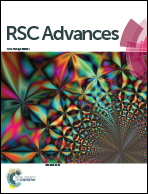Designing and optimizing a stirring system for a cold model of a lithium electrolysis cell based on CFD simulations and optical experiments
Abstract
In the electrolysis lithium industry, liquid lithium metal and chloride gas need to be separated quickly because of the recombination of lithium and chloride. A new stirring system can help to separate liquid metal and chloride in lithium electrolysis cells. The stirring system was tried in a cold model to get the right parameters. Computational Fluid Dynamics (CFD) and Particle Image Velocimetry (PIV) were both employed to design and optimize the device parameters which included impeller type, diameter, position and rotational speed. PIV tests and CFD model validation were conducted in a cylindrical stirred tank. Different turbulence models were applied and the standard k–ε model was considered as the most suitable one. The results show that: the propeller agitator properties of a low blade number and low installation position were advantageous to the lithium collection. The impeller diameter and rotational speed have positive effects on the expected flow field. The simulation results were applied in cold model experiments, which showed that the simulations are correct and can be used in real separator design.


 Please wait while we load your content...
Please wait while we load your content...